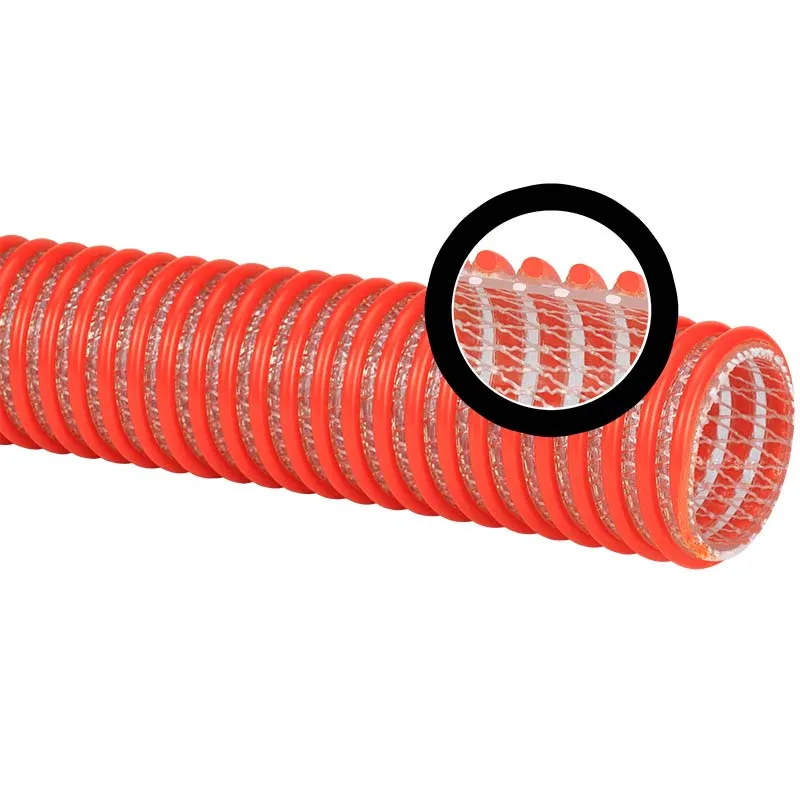Flexible Air Tubing Made from Durable Polyurethane Materials for Various Applications
Pneumatic Polyurethane Tubing A Comprehensive Overview
In the realm of industrial automation and pneumatic systems, the choice of materials is paramount. Among the various options available, pneumatic polyurethane tubing stands out due to its versatility, durability, and performance characteristics. This article will delve into the properties, applications, and advantages of polyurethane tubing, providing a clearer understanding of why it is a preferred choice for many industries.
What is Pneumatic Polyurethane Tubing?
Pneumatic polyurethane tubing is a type of flexible pipe made from polyurethane, a synthetic polymer composed of organic units joined by carbamate (urethane) links. This material is known for its exceptional elasticity, abrasion resistance, and chemical stability. The tubing is typically used to transport compressed air or fluids in pneumatic systems, making it a crucial component in various industrial applications.
Key Properties of Polyurethane Tubing
1. Flexibility and Bend Radius One of the most notable features of polyurethane tubing is its extraordinary flexibility. It can easily bend and twist without kinking, allowing for smoother airflow and reducing the risk of obstructions in the system. The tubing's ability to maintain its integrity during bending makes it suitable for applications requiring tight turns and intricate layouts.
2. Durability and Abrasion Resistance Polyurethane is inherently more durable than many other materials like PVC or rubber. It exhibits excellent resistance to wear, abrasion, and impact, which is essential in harsh industrial environments. This durability significantly extends the tubing's lifespan, reducing replacement costs and downtime.
3. Temperature and Chemical Resistance Pneumatic polyurethane tubing can withstand a wide range of temperatures, typically from -40°F to 160°F (-40°C to 71°C). Its ability to resist various chemicals, including oils, solvents, and fuels, enhances its suitability for diverse applications across different industries.
4. Low Friction The smooth inner surface of polyurethane tubing minimizes friction, allowing for optimal airflow and reducing energy consumption. This characteristic is advantageous in pneumatic systems where efficiency is a priority.
5. Lightweight Compared to metal tubing, polyurethane tubing is considerably lighter, making installation and modifications more manageable. Its light weight also contributes to overall system efficiency, reducing the workload on pneumatic components.
Applications of Pneumatic Polyurethane Tubing
Pneumatic polyurethane tubing finds a wide range of applications across various sectors, including
pneumatic polyurethane tubing

- Manufacturing In manufacturing plants, pneumatic systems require components that can withstand rigorous conditions. Polyurethane tubing is often used in air supply lines, actuators, and other machinery parts.
- Automotive The automotive industry utilizes polyurethane tubing for brake lines, fuel lines, and pneumatic controls
. Its ability to resist chemical exposure and temperature fluctuations makes it an excellent choice for automotive applications.- Food and Beverage In food processing, hygiene is paramount. Polyurethane tubing meets FDA guidelines, making it suitable for transporting food and beverages without contamination.
- Construction The construction sector uses polyurethane tubing in pneumatic tools and equipment. Its durability and flexibility make it beneficial for tasks requiring high mobility and reliability.
Advantages of Using Pneumatic Polyurethane Tubing
Investing in pneumatic polyurethane tubing presents several advantages
- Cost-Effectiveness While the initial cost of polyurethane tubing might be higher than that of lower-quality materials, its durability and longevity result in cost savings over time due to reduced maintenance and replacement needs.
- Versatility The wide range of available sizes, colors, and configurations makes polyurethane tubing adaptable to numerous applications, accommodating specific needs without compromising performance.
- Environmental Resistance With its resistance to UV radiation, ozone, and other environmental factors, polyurethane tubing is suitable for both indoor and outdoor applications.
- Performance Optimization The enhanced airflow due to low friction significantly improves overall performance in pneumatic systems, leading to increased productivity.
Conclusion
Pneumatic polyurethane tubing is an invaluable component in modern industrial applications. Its unique combination of flexibility, durability, and resistance to various environmental factors makes it a superior choice for pneumatic systems. By understanding its key properties and advantages, industries can make informed decisions that enhance operational efficiency and reduce costs. As technology advances, the applications and benefits of pneumatic polyurethane tubing are likely to expand further, solidifying its status as a fundamental element in the world of industrial automation.
-
Welded Wire Mesh Panel: Durable, Versatile, and AffordableNewsJul.28,2025
-
Top Quality Oxy Acetylene Hoses for Sale Fit for Welding DemandsNewsJul.28,2025
-
The Future of Pneumatic Air Tubes in IndustryNewsJul.28,2025
-
Superior and Reliable LPG Hose Pipe Solutions for Every NeedNewsJul.28,2025
-
Exceptionally Durable and Versatile Premium Braided PVC TubingNewsJul.28,2025
-
Best Adapters for Connecting Garden Hose to PVC Pipe ConnectionsNewsJul.28,2025














